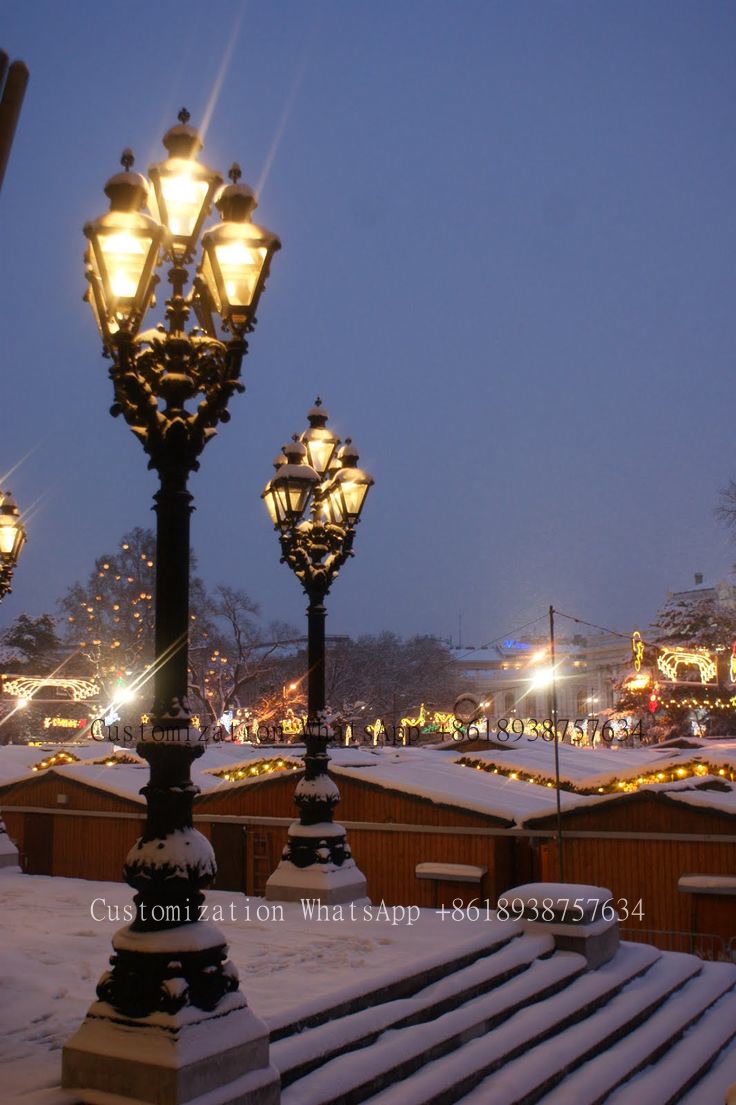Enhancing Urban Living: The Role of Street Lighting in Urban Green Spaces
Enhancing Urban Living: The Role of Street Lighting in Urban Green Spaces
Urban green spaces are essential for vibrant and sustainable cities. They offer residents a refuge from the hustle and bustle of urban life while promoting ecological benefits and enhancing mental well-being. However, these spaces cannot fulfill their potential without appropriate street lighting. Street lighting and urban green spaces go hand in hand in creating safe, inviting, and sustainable environments. In this article, we will explore the intricate relationship between street lighting and urban green spaces, highlighting their significance, benefits, and innovative practices.
The Importance of Street Lighting in Urban Areas
Effective street lighting is a fundamental aspect of urban design that influences safety, accessibility, and Aesthetics. Well-lit streets and green spaces provide several benefits, such as:
- Safety: Adequate lighting reduces crime rates and enhances the feeling of security among citizens.
- Navigational Ease: Properly illuminated spaces make it easier for people to move around without fear of tripping or getting lost.
- Social Interaction: Lighted public spaces encourage social gatherings, fostering community cohesion.
Benefits of Integrating Street Lighting with Urban Green Spaces
Integrating street lighting within urban green spaces reveals numerous advantages for communities. Here are some key benefits:
| Benefits | Description |
| Enhanced Safety | Well-lit parks reduce accidents and discourage anti-social behavior. |
| Extended Accessibility | Good lighting allows people to enjoy green spaces after dark, accommodating varied lifestyles. |
| Visual Appeal | Attractive lighting enhances the aesthetic quality of parks and enhances nighttime enjoyment. |
| Energy Efficiency | Modern LED Lighting options provide sustainable solutions that save energy. |
Designing Effective Street Lighting for Urban Green Spaces
The design of street lighting in urban green spaces must align with the broader goals of urban design, safety, and sustainable development. Key considerations include:
Lighting Types
Using a variety of lighting types can create a warm and inviting atmosphere. Options include:
- LED Lights: Energy-efficient and long-lasting, these lights are ideal for reducing operational costs.
- Solar-Powered Options: These are sustainable and reduce energy consumption, ideal for eco-conscious cities.
- Decorative Fixtures: Attractive designs can enhance the park’s aesthetic appeal while serving their practical purpose.
Placement and Positioning
The effective placement of lights helps to maximize visibility. Key strategies include:
- Positioning lights along pathways, entrances, and seating areas.
- Using pole heights that minimize shadows and avoid glare.
- Creating focal points with brighter lighting in areas where social interactions are encouraged.
Case Studies: Successful Integration of Street Lighting and Urban Green Spaces

Around the world, several cities have successfully integrated street lighting with urban green spaces, leading to improved community experiences:
1. Bryant Park, New York City
New York City’s Bryant Park is known for its beautiful landscaping and vibrant atmosphere. The park has strategically placed LED street lighting that enhances safety while creating a welcoming environment for events, benches, and green lawns.
2. Millenium Park, Chicago
This iconic park incorporates artistic lighting design that transforms the park at night, encouraging visitors to enjoy its unique features and installations.
Innovative Technologies in Street Lighting
As technology advances, innovative solutions for street lighting continue to emerge. Here are some exciting trends:
Smart Lighting Systems
Smart lighting uses sensors and AI to adjust light intensity based on movement, providing optimal lighting conditions while conserving energy.
Adaptive Lighting Solutions
Adaptive systems can change colors and brightness based on environmental conditions, enhancing the atmosphere of urban green spaces.
Streets integrated with these innovative lighting technologies can respond dynamically to various situations, improving safety and energy efficiency.
Challenges and Considerations
While the benefits of integrating street lighting and urban green spaces are clear, challenges still exist:
- Initial Costs: The installation of sophisticated lighting systems can require significant upfront investment.
- Maintenance: Ongoing maintenance is crucial for ensuring the lights remain functional and effective.
- Community Engagement: Involving local communities in the design process can yield better results, but may require additional time and resources.
Conclusion
The relationship between street lighting and urban green spaces significantly impacts urban living. Well-designed lighting not only enhances the safety and aesthetic appeal of parks but also promotes social interaction and sustainability. As cities grow, integrating innovative lighting solutions in green spaces will be essential for promoting safer and more vibrant urban environments. To achieve this, communities should collaborate with urban planners, lighting designers, and citizens to create spaces that reflect their unique identities while meeting modern challenges.
In sum, enhancing urban green spaces with proper street lighting can dramatically improve how city dwellers interact with their environment after dark, providing them not only safety and accessibility but also a warm invitation to truly enjoy their urban experience.
